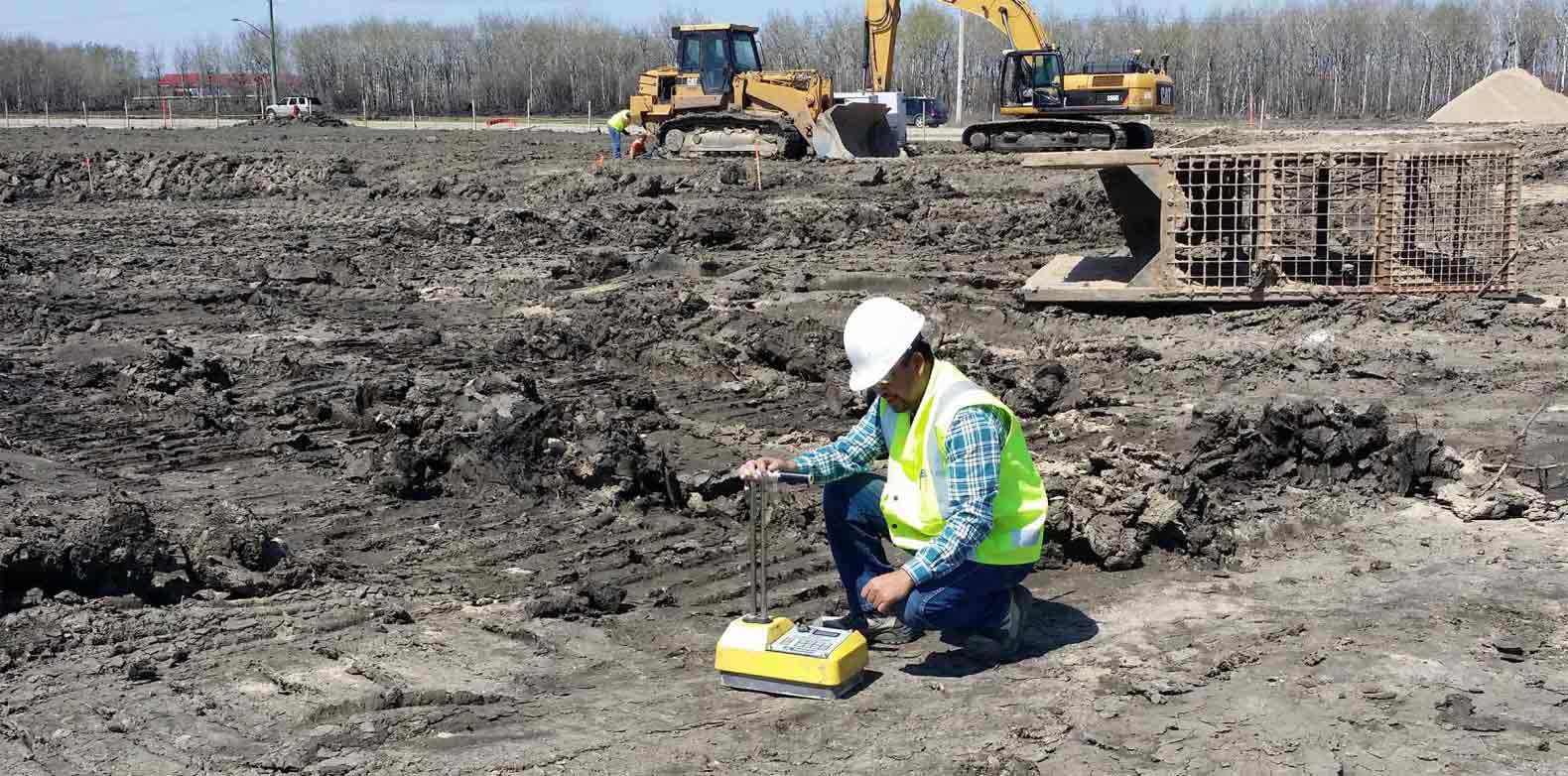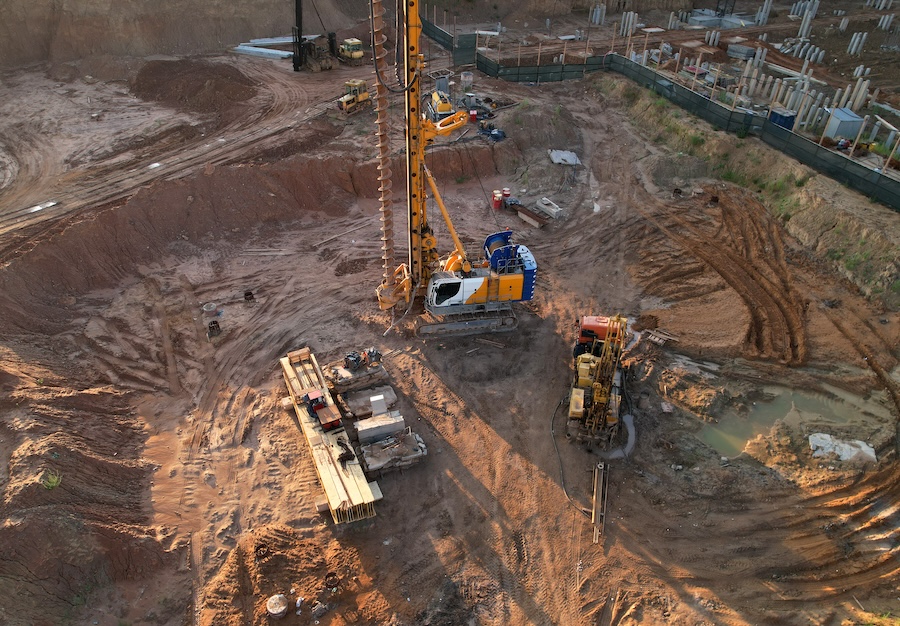Understanding the Vital Duty of the Geotechnical Sector in Modern Construction Projects and Facilities Advancement
The geotechnical sector is a foundation of modern-day building and construction and facilities development, providing important insights right into soil habits that directly influence project results. With advanced dirt assessments and ingenious engineering options, geotechnical specialists not just guarantee architectural integrity however additionally address sustainability worries in the middle of evolving ecological standards. As facilities demands grow and brand-new challenges arise, the importance of this area ends up being increasingly evident. What ramifications might these advancements have for future jobs and the total security of our constructed environment?
Significance of Soil Analysis
Dirt evaluation plays an essential function in the geotechnical market, acting as the structure for educated decision-making in building projects. Precise dirt examination is essential for identifying the viability of a site for numerous sorts of frameworks, consisting of property homes, business buildings, and bridges. By analyzing dirt make-up, density, moisture, and toughness material, engineers can prepare for possible challenges and minimize risks associated with ground instability, erosion, and settlement.
The analysis procedure usually includes a series of tests and observations that provide crucial info concerning the subsurface conditions. This information educates the style and building and construction processes, ensuring that frameworks are improved strong ground with ample assistance. Furthermore, understanding the dirt account makes it possible for engineers to pick appropriate building approaches and products, enhancing source application and decreasing expenses.
In enhancement to guaranteeing structural stability, dirt assessment contributes to ecological sustainability. By determining possible contamination or negative impacts on surrounding ecosystems, engineers can execute strategies to protect these all-natural sources. In general, extensive soil analysis is crucial in the geotechnical area, underpinning the safety, performance, and ecological responsibility of building and construction jobs.
Key Geotechnical Techniques
A range of crucial geotechnical strategies are used to boost the security and assess and efficiency of construction websites. One fundamental technique is dirt sampling and screening, which permits engineers to figure out the chemical and physical buildings of the ground. This details is important for making notified decisions relating to foundation layout and construction methods.
Another essential strategy is website characterization, which involves the comprehensive assessment of dirt and rock conditions via techniques such as borehole exploration and in-situ testing. Methods like Criterion Infiltration Tests (SPT) and Cone Penetration Tests (CPT) offer useful data on dirt strength and stratigraphy.
Ground improvement strategies, such as dirt stabilization and grouting, are also vital in improving the load-bearing capacity of weak soils. These techniques can reduce settlement and improve overall website conditions.
In addition, incline security evaluation is crucial for identifying potential landslide dangers and making sure the security of excavations. This evaluation usually utilizes numerical modeling and limitation equilibrium methods to anticipate dirt actions under various problems.
Integrating these geotechnical techniques right into building preparation not just optimizes project end results yet also ensures the lasting sustainability of facilities growth.
Influence On Construction Safety

Moreover, efficient geotechnical engineering involves applying mitigation strategies for determined risks. This may include dirt stabilization techniques, retaining frameworks, or water drainage systems to reduce hydrostatic stress. By dealing with these factors, building and construction groups can minimize the possibility of crashes and boost employee security.
In addition, continuous tracking of website problems is vital throughout building. Geotechnical tools can give real-time information regarding ground activity and stability, permitting prompt treatments when necessary.
Essentially, the geotechnical sector plays an essential role in safeguarding building jobs. By focusing on ground integrity and utilizing extensive assessment approaches, the geotechnical field not only shields the labor force yet additionally contributes to the long life and reliability of built facilities.
Sustainability in Geotechnical Practices

Furthermore, geotechnical designers are now using advanced innovations, such as geosynthetics, which boost soil security while minimizing the volume of material needed. This not just saves sources yet likewise causes much less waste generation (geo tech engineer). The combination of sustainable layout principles into geotechnical design motivates using renewable resource sources in construction procedures, further minimizing carbon emissions
By performing these analyses, geotechnical specialists can develop techniques that alleviate adverse results, ensuring compliance with environmental policies. In general, the focus on sustainability within geotechnical methods not just adds to the longevity and strength of framework yet likewise promotes a liable method to land and resource monitoring.
Future Trends in Geotechnical Design
Development is driving the future of geotechnical engineering, as arising modern technologies and approaches improve the sector. The combination of innovative information analytics and synthetic knowledge is established to reinvent website investigation and threat analysis, making it possible for engineers to make even more informed decisions based on real-time information. The usage of geosynthetic products is obtaining traction, offering sustainable services that boost soil security and lower ecological influence - engineer of record.
Another considerable trend is the adoption of automated and robot systems for surveillance and building procedures. These innovations not just improve accuracy but likewise boost safety and security by lessening human participation in harmful atmospheres. Additionally, the application of Structure Information Modeling (BIM) in geotechnical style helps with boosted collaboration among stakeholders, enhancing project delivery and lowering costs.
As climate modification see post poses new obstacles, the industry is significantly concentrating on resilience and flexibility in layout techniques, making certain infrastructure can withstand extreme climate events. The recurring fad toward sustainability will certainly drive development in environment-friendly materials and techniques, lining up geotechnical design with broader environmental goals. Jointly, these fads will shape an extra effective, sustainable, and resistant geotechnical landscape for future projects.
Final Thought

The geotechnical market is a keystone of modern-day construction and infrastructure advancement, giving essential insights right into dirt behavior that straight influence project outcomes. geotechnical engineers.Dirt assessment plays an essential role in the geotechnical industry, serving as the structure for educated decision-making in construction projects. Overall, extensive dirt analysis is essential in the geotechnical field, underpinning the safety and security, performance, and environmental responsibility of construction jobs
Building and construction safety is considerably influenced by geotechnical practices, as the stability and integrity of the ground directly influence the general safety of a building and construction website.In verdict, the geotechnical sector is vital in modern-day building and construction and infrastructure advancement, offering critical analyses that make sure architectural integrity and safety and security.